 November 12, 2020 John E. Ross, KD8IDJ, Editor
| ||||||
ARRL Petitions FCC for Reconsideration of Order Removing 3.4 GHz Amateur Allocation ARRL has petitioned the FCC to reconsider its order removing the secondary amateur allocation at 3.3 - 3.5 GHz and requiring that amateur operations in the 3.450 - 3.500 GHz band cease "on a date consistent with the first possible grant of flexible use authorizations to new users." "The amateur services in this band long have been operated on a secondary allocation status, functionally similar to the de facto secondary status of Part 5 experimental licenses, whose continued operation was (correctly) approved in the same proceeding," ARRL told the FCC. "Continued operation of amateur stations similarly should be permitted in the vacant portions of this spectrum that otherwise will go unused." ARRL said the public interest is in using the spectrum, not in leaving it vacant waiting for some future application. "The Commission's decision in this proceeding undermines its long-standing policy "The Commission's decision to remove the amateur secondary allocation throughout the 3300 - 3500 MHz band," ARRL said, "appears to be based upon a mistaken conclusion that amateur secondary 'sharing' of this spectrum is equivalent to the type of 'sharing' that occurs with primary government and other primary commercial users, when in fact amateur secondary operations are quite different in usage, scope, and signal range." ARRL outlined a number of ways radio amateurs use the band. ARRL said that weak-signal point-to-point amateur communication often applies new technologies, methodologies, and coding to improve the communications capability of equipment. "Since the purpose of this type of activity is to hear or decode weak signals, operators use every possible means to avoid frequencies with other signals." Amateurs also operate radio beacons to study propagation, contributing to a better understanding of propagation in the 3.4 GHz range, ARRL said. "Amateur beacons are fixed and low power, and therefore relatively easy to engineer into the environment if other users initiate operations, or to relocate or shut down if they cannot be 'engineered in.'" ARRL's petition also cited moonbounce as another aspect of amateur operation. "This field of activity has led to a chain of improvements in antennas and equipment design in the 3.4 GHz spectrum," ARRL asserted, and is extremely unlikely to interfere with terrestrial services. Amateur satellites could also use the 3.4 - 3.41 GHz band with minimal likelihood to present interference concerns due to the signals' low power and narrow antenna beamwidths. Additionally, uplinks employ antennas that point skyward, further minimizing any possible area of concern. "Other frequencies will not necessarily be available when needed, and this limitation threatens to constrain future experiments with space communications technologies as the number of amateur satellite experiments increase in number and purpose," ARRL said. The 3.3 - 3.5 GHz band also is used for digital high-speed data mesh networks and for amateur TV repeaters. "Design of and work with mesh networks has attracted an ongoing stream of computer-literate youth to the amateur ranks," ARRL contended. "The networks themselves are commonly employed for digital experimentation with a wide range of technologies and services, with a bedrock purpose of emergency readiness and availability during actual emergencies. ARRL noted that the greater the number of available band choices, the more likely that a suitable link could be engineered for a specific path. ARRL said that these and other amateur experimental activities make good use of the spectrum, "and should be permitted to continue on a secondary basis unless and until a new primary licensee is ready to operate in a geographic area where interference would result." Red Cross Fall Emergency Communication Drill Set for November 14 The fall 2020 nationwide Red Cross Emergency Communication Drill will take place on Saturday, November 14, in conjunction with ARRL Amateur Radio Emergency Service (ARES®) groups. The focus of the exercise is sending messages from local sites to a group of divisional clearing houses to simulate and demonstrate amateur radio's capability to relay information in emergencies and disasters. The drill will get under way at 0900 until 1800 local time in each time zone. The scenario is a The drill will use Winlink as the primary method of delivering pre-formatted messages. The goal is to encourage more operators to become familiar with Winlink and its message templates -- primarily ARC-213. This format permits sending standardized messages. The drill aims to bring as many radio operators as possible up to a "basic" level of Winlink proficiency. A series of Winlink Workshops is held each Thursday at 0100 UTC on Zoom. Join the SEC-ARES group for announcements and discussions. Include name and call sign when registering. Winlink proficiency goals have been drafted, a Winlink technical support team has been formed, and metrics for drill success have been developed. The proficiency goals are established as a training guideline and reference online training resources. Many hams new to Winlink may find these resources helpful. Several hundred radio amateurs have already signed up for the event. This event is open to all radio amateurs. Low-Band Titan John Devoldere, ON4UN, SK A giant in the field of low-frequency DXing and contesting, John Devoldere, ON4UN/AA4OI, of Merelbeke, Belgium, died on November 9. An ARRL Life member, he was 79 and had been in failing health. In addition to his enthusiasm for operating, Devoldere may be best known as the author of the popular book ON4UN's Low Band DXing,
published by ARRL, as well as other books, including Ethics and Operating Procedures for the Radio Amateur, which he co-authored with Mark Demeuleneere, ON4WW. The book is hosted on the International Amateur Radio Union (IARU) Region 1 website. "Ham radio, and especially low-band DXing, were my father's lifelong passions and always had a strong presence in our house," his daughter, Marleen, said in announcing her father's passing. "Though I don't have a call sign, I very much feel a part of the big radio family and always will." The Royal Union of Belgian Radio Amateurs (UBA) President Claude van Pottelsberghe de la Potterie, ON7TK, said Devoldere was "a radio amateur in heart and soul" who will always be remembered. "We are grateful for his contribution to [amateur radio] and for his efforts within the UBA," he said. He was a member of the HF Committee from 1983 to 2016. In 1994, he became Provincial President of East Flanders. Two years later, he joined the national board of the UBA, and from 1998 to 2007 he became chairman and was at the basis of many reforms within the UBA. Devoldere retired in 2016. According to his QRZ.com profile, he became interested in radio at the age of 11 and built his first single-tube transmitter the following year. His uncle, ON4GV, got him interested in amateur radio. Devoldere was licensed in 1961, at the age of 20. He built much of his station gear and got into contesting, winning the UBA CW Contest in 1962. At about the same time, he got interested in low-band operating. He worked 364 DXCC entities on 80 meters, lacking only North Korea.
Belgium didn't gain access to160 meters until 1987, and a few years later he erected a full-size quarter-wave vertical for top band (160 meters). By 2018, he had 325 DXCC entities on 160 meters. He authored the 80-Meter DX Handbook for Ham Radio magazine. ARRL approached him about writing a book on low-band operating, and the first edition of Low Band DXing came out in 1987, and updated editions followed. He built a competitive multi-single contest station and operated in some 80 international contests -- including the ARRL International DX, the CQ World Wide DX, Stew Perry Topband Challenge, and others. The walls in his ham shack hold more than 50 first-place contest plaques. He was elected to the CQ Contest Hall of Fame in 1997 and the CQ DX Hall of Fame in 2007. He received the Yasme Excellence Award in 2013. Marleen Devoldere said she is planning a digital farewell ceremony on Saturday, November 21. The family invites condolences via email. ARRL Podcasts Schedule
The latest edition of Eclectic Tech (Episode 20) features an interview with ARRL Emergency Preparedness Director Paul Gilbert, KE5ZW,
The On the Air and Eclectic Tech podcasts are sponsored by Icom. Both podcasts are available on iTunes (iOS) and Stitcher (Android), as well as on Blubrry -- On the Air | Eclectic Tech. ARRL Learning Network Webinars Visit the ARRL Learning Network website (a members-only benefit) to register for upcoming sessions and to view previously recorded sessions. The schedule is subject to change.
Amateur radio has played a significant role in public service communications for the Boston Marathon for several decades. That role was put to the test in 2013 when two bombs were exploded near the finish line. This presentation will describe the role that ham radio played at the marathon and how that role changed due to the bombing. Tuesday, December 8, 2020, 10 AM PST / 1 PM EST (1800 UTC) Learn and Have Fun with Morse Code: Howard Bernstein, WB2UZE, and Jim Crites, W6JIM Morse code, or "CW," is a popular ham radio operating mode. Learning CW does not have to be an arduous or lonely experience. Learn, practice, and enjoy CW with the methods used by the Long Island CW Club. Thursday, December 17, 2020, 5 PM PST / 8 PM EST (0100 UTC on Friday, December 18) Low-Frequency Station SAQ Broadcasts UN Day Message of Unity in Face of COVID-19 On United Nations Day, October 24, the Alexanderson alternator station SAQ in Sweden transmitted a message on 17.2 kHz urging unity in the face of the COVID-19 pandemic. The message transcript follows. "CQ CQ CQ DE SAQ SAQ SAQ This is Grimeton Radio/SAQ in a transmission using the Alexanderson 200 kW alternator on 17.2 kHz. The message was signed by Anders Tegnell, chief epidemiologist of Sweden's Public Health Agency. SAQ notes that QSL information is on the Alexanderson alternator website. SAQ received some 400 listener reports from all over the world, with just 20 reporting they were unable to copy the message. "As usual, we have received very many reports from north, central, and eastern Europe," the SAQ report said. "We also have received reports from the US and some from Russia and Japan. The farthest reports comes from Tasmania, south of Melbourne, approximately 16,000 kilometers (9,942 miles) from Grimeton, Sweden." The entire transmission event was also broadcast on the SAQ YouTube channel, with some technical problems experienced. Following the United Nations Day transmission, singer Anna Louise Ekman performed a concert in the transmitter hall with songs in Swedish and Italian. She was accompanied by her pianist, Oscar Johansson, and her sister, violinist Åsa Grimberg. "Black Swan" Exercise Offers Opportunity to Demonstrate IPAWS via HF The SHARES HF program recently brought the FEMA Integrated Public Alert & Warning System (IPAWS) and the Winlink HF email development team together to demonstrate that an IPAWS message could be delivered by HF in the event of an internet outage. IPAWS is FEMA's nationwide local alert system that provides authenticated emergency and life-saving information to the public through mobile phones using Wireless Emergency Alerts, to radio and television via the Emergency Alert System, and on NOAA Weather Radio. The Ideally, a SHARES Winlink station would be at the location where the IPAWS message originated. Because this wasn't possible within the time and budget constraints, the internet was used to get IPAWS messages from the point of origination to the SHARES HQ program office in Arlington, Virginia, where custom software written by Winlink Development Team Chief Programmer Phil Sherrod, W4PHS, detected the IPAWS message, and forwarded it by Winlink HF email to exercise participants in Ohio. The messages were relayed automatically from FEMA through the SHARES Winlink Hybrid HF Radio Email Network, with no human intervention. Due to COVID-19 restrictions, no station personnel were present in the HQ SHARES radio station building. Messages were then retrieved by SHARES operators over SHARES Winlink, and the messages handed off to radio amateurs, who manually relayed them to county and city emergency management agencies. Involved were Exercise messages were sent each day at various times to demonstrate that the Winlink system gets the message through under varying radio conditions. The project was coordinated by Scott Johnson of Sawdey Solutions, a FEMA contractor, and Ross Merlin, WA2WDT, the SHARES HF Radio Program Manager, of the Cybersecurity and Information Security Agency (CISA) of DHS. The SHARES Hybrid Winlink Radio Email Network is provided to the federal government at no cost by the Amateur Radio Safety Foundation, Inc. -- Thanks to Ross Merlin, WA2WDT, SHARES HF Radio Program Manager Announcements
Australian Space Communications Station Will Feature Optical Data Transfer The University of Western Australia (UWA) is set to install an optical communications station capable of receiving high-speed data transmissions from space. The communications station will be able to receive data from spacecraft from anywhere between low-Earth orbit (between 100 miles and 620 miles above Earth's surface) to as far away as the surface of the moon -- some 240,000 miles away. Astrophotonics Group Leader Dr. Sascha Schediwy at UWA and the International Centre for Radio Astronomy (ICRAR) said optical
communications are an emerging alternative to radio waves and are expected to drastically improve data transfer capabilities from space. "Most current space communications rely on radio waves -- it's the same technology that brought us the voice of Neil Armstrong when the Apollo 11 mission landed on the moon in 1969," Schediwy said. "Free-space optical laser communications has several advantages over radio, including significantly faster data rates and hack-proof data transfer. It's the next generation of space communications, and it's likely to be how we'll see high-definition footage of the first woman to walk on the moon." The $535,000 ground station will use a 0.7-meter observatory-grade optical telescope donated to ICRAR, which will be fitted with atmospheric noise suppression technology developed at the university. The Western Australian ground station will be a joint venture between the UWA Astrophotonics Group, the ARC Centre of Excellence for Engineered Quantum Systems (EQUS), and UK industry partner Goonhilly Earth Station, which handles data traffic and supports secure communications links for major satellite operators including Intelsat, Eutelsat, and SES Satellites. Data from the station will be fed to Goonhilly's supercomputer data center in Cornwall, England by high-speed fiber. It will form part of a larger Australasian network of optical stations, led by the Australian National University and supported by partners in South Australia and New Zealand. EQUS Director Andrew White said the Western Australian ground station could be the first of its kind in the southern hemisphere and have additional applications in research in different fields. Goonhilly Chief Executive Ian Jones said the initiative is driving satellite communications into the next generations of systems and technologies needed to support the "enormous" data volumes produced by space missions. "This data arises from science and other missions and, in the future, will come from lunar and Mars missions that involve remote operations, robotics, and AI," Jones said. The ground station is expected to be operational from early 2021 and open for business later that year. In Brief...
The K7RA Solar Update Tad Cook, K7RA, Seattle, reports: The last time we experienced a day with no sunspots was October 13. Prior to that, we had no sunspots on September 26 - October 8, September 24, and August 21 - September 22. Cycle 25 is clearly under way and going strong. Average daily sunspot number over the November 5 - 11 reporting Geomagnetic indicators were very quiet, with average daily planetary A index dropping from 6.3 to 4.4, and middle latitude A index (based on readings from a single magnetometer on Wallops Island, Virginia) from 4.9 to 2.7. Predicted solar flux for the next 45 days is 88 on November 12 - 14; 86 on November 15; 84 on November 16 - 19; 78 on November 20 - 25; 80 and 82 on November 26 - 27; 86 on November 28 - December 5; 90, 88, 86, and 84 on December 6 - 9; 82 on December 10 - 11; 80 on December 12; 78 on December 13 - 22; 80 and 82 on December 23 - 24, and 86 on December 25 - 26. Predicted planetary A index is 5 on November 12 - 19; 15, 12, and 15 on November 20 - 22; 8, 10, and 12 on November 23 - 25; 5 on November 26 - December 2; 8 on December 3 - 4; 5 on December 5 - 8; 8 and 10 on December 9 - 10; 5 on December 11 - 13; 10, 5, and 10 on December 14 - 16; 15, 12, and 15 on December 17 - 19; 8, 10, and 12 on December 20 - 22, and 5, 5, 8, and 5 on December 23 - 26. An article in EarthSky discusses the recent increase in solar activity. Sunspot numbers for November 5 - 11 were 28, 35, 37, 40, 27, 27, and 25, with a mean of 31.3. The 10.7-centimeter flux was 90.7, 93.8, 90.6, 90, 90, 86.8, and 88.1, with a mean of 90. Estimated planetary A indices were 4, 8, 7, 5, 1, 2, and 4, with a mean of 4.4. Middle latitude A index was 3, 7, 4, 3, 0, 0, and 2, with a mean of 2.7. A comprehensive K7RA Solar Update is posted Fridays on the ARRL website. For more information concerning radio propagation, visit the ARRL Technical Information Service, read "What the Numbers Mean...," and check out K9LA's Propagation Page. A propagation bulletin archive is available. For customizable propagation charts, visit the VOACAP Online for Ham Radio website. Share your reports and observations. Just Ahead in Radiosport
Upcoming ARRL Section, State, and Division Conventions Note: Many conventions and hamfests have been canceled or postponed due to the coronavirus pandemic. Check the calendar of canceled events on the ARRL website.
Find conventions and hamfests in your area. ARRL -- Your One-Stop Resource for . .
Subscribe to...
Free of charge to ARRL members...
| ||||||
.jpg) objective to provide for and encourage more intensive use of spectrum," ARRL said.
objective to provide for and encourage more intensive use of spectrum," ARRL said..jpg) major weather event that has caused outages and created hazardous conditions across the country.
major weather event that has caused outages and created hazardous conditions across the country.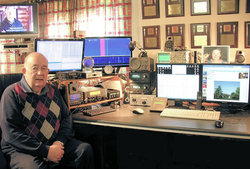
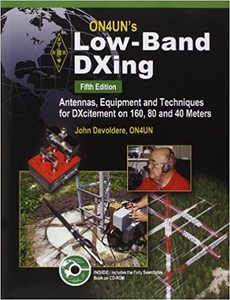
.jpg) The latest episode of the On the Air podcast (Episode 11) discusses how to choose the right antenna for your station, considering several aspects that go beyond cost and complexity.
The latest episode of the On the Air podcast (Episode 11) discusses how to choose the right antenna for your station, considering several aspects that go beyond cost and complexity..jpg) about the future of amateur radio technology in public service. Also: A new power source that uses diamonds and nuclear waste.
about the future of amateur radio technology in public service. Also: A new power source that uses diamonds and nuclear waste. Amateur Radio's Role at the Boston Marathon Bombing: Steve Schwarm, W3EVE
Amateur Radio's Role at the Boston Marathon Bombing: Steve Schwarm, W3EVE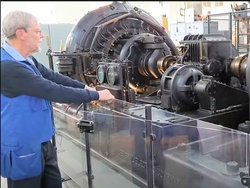 The global COVID-19 pandemic challenges people and nations to unite to minimize the negative consequences for individuals and societies, and to uphold the advancements in public health made in recent decades. Good health and wellbeing is a prerequisite for a peaceful and sustainable global development, and health equity cannot be achieved without peace and human security."
The global COVID-19 pandemic challenges people and nations to unite to minimize the negative consequences for individuals and societies, and to uphold the advancements in public health made in recent decades. Good health and wellbeing is a prerequisite for a peaceful and sustainable global development, and health equity cannot be achieved without peace and human security."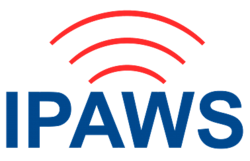 recent Ohio Military Reserve "Black Swan" exercise provided the opportunity to demonstrate the ability to deliver an IPAWS message via HF.
recent Ohio Military Reserve "Black Swan" exercise provided the opportunity to demonstrate the ability to deliver an IPAWS message via HF.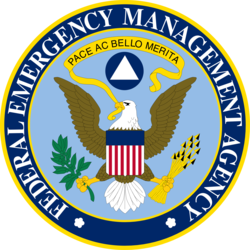 the ARRL Amateur Radio Emergency Service (ARES®), the ARRL National Traffic System (NTS), and amateurs involved through the government's AUXCOMM program.
the ARRL Amateur Radio Emergency Service (ARES®), the ARRL National Traffic System (NTS), and amateurs involved through the government's AUXCOMM program..png) The FCC will hold an
The FCC will hold an 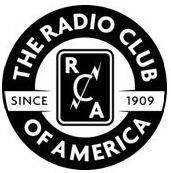 The Radio Club of America will celebrate the 100th anniversary of KDKA on November 17 at 9 PM EST, by hosting a conversation with the station's program manager, Jim Graci. RCA President Emeritus Tim Duffy, K3LR, and Graci will take a walk down memory lane. The event is free, but
The Radio Club of America will celebrate the 100th anniversary of KDKA on November 17 at 9 PM EST, by hosting a conversation with the station's program manager, Jim Graci. RCA President Emeritus Tim Duffy, K3LR, and Graci will take a walk down memory lane. The event is free, but 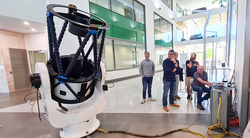
.jpg) Kristen McIntyre, K6WX, of Fremont, California, has assumed the office of ARRL Pacific Division Director following the recent vacancy in the office. She will serve as Director for the remainder of the current term, which expires on December 31, 2022. McIntyre was appointed as the Division's Vice Director in 2018, and was unopposed as a candidate for the position in 2019. She has served as ARRL Technical Coordinator for the East Bay Section. First licensed in the late 1970s while a student at Massachusetts Institute of Technology, she let her license expire, later re-licensing and obtaining her Amateur Extra-class license. McIntyre also is licensed in Japan, her second home, as JI1IZZ. She is president of the Palo Alto Amateur Radio Club and is a senior software engineer at Apple.
Kristen McIntyre, K6WX, of Fremont, California, has assumed the office of ARRL Pacific Division Director following the recent vacancy in the office. She will serve as Director for the remainder of the current term, which expires on December 31, 2022. McIntyre was appointed as the Division's Vice Director in 2018, and was unopposed as a candidate for the position in 2019. She has served as ARRL Technical Coordinator for the East Bay Section. First licensed in the late 1970s while a student at Massachusetts Institute of Technology, she let her license expire, later re-licensing and obtaining her Amateur Extra-class license. McIntyre also is licensed in Japan, her second home, as JI1IZZ. She is president of the Palo Alto Amateur Radio Club and is a senior software engineer at Apple.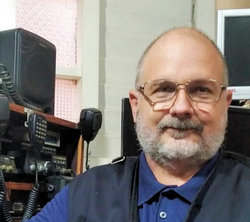 A new IARU Region 2 Emergency Coordinator has been appointed. The International Amateur Radio Union Region 2 (IARU-R2) Executive Committee has named Carlos A. Santamaria, CO2JC, as the new Region 2 Emergency Coordinator (EMCOR). He succeeds Cesar Pio Santos, HR2P, who retired after 12 years of service. Santamaria has extensive experience serving as Federacion de Radioaficionados de Cuba (FRC) National Emergency Network Coordinator. He oversaw the network's activities during hurricanes and earthquakes, maintaining contact with emergency coordinators in other Caribbean countries to protect emergency frequencies. He also advises the Cuban headquarters of the United Nations Organization on emergency communications during disasters. The IARU Region 2 Executive Committee credited Santos' success in dealing with emergency committees and telecom authorities. The EC called him "a key player" in ensuring that Central America benefited from an ITU pilot plan for an operational Winlink system in the region, including the provision of equipment, installation, and training. The EC also credited Santos with presenting emergency communications workshops.
A new IARU Region 2 Emergency Coordinator has been appointed. The International Amateur Radio Union Region 2 (IARU-R2) Executive Committee has named Carlos A. Santamaria, CO2JC, as the new Region 2 Emergency Coordinator (EMCOR). He succeeds Cesar Pio Santos, HR2P, who retired after 12 years of service. Santamaria has extensive experience serving as Federacion de Radioaficionados de Cuba (FRC) National Emergency Network Coordinator. He oversaw the network's activities during hurricanes and earthquakes, maintaining contact with emergency coordinators in other Caribbean countries to protect emergency frequencies. He also advises the Cuban headquarters of the United Nations Organization on emergency communications during disasters. The IARU Region 2 Executive Committee credited Santos' success in dealing with emergency committees and telecom authorities. The EC called him "a key player" in ensuring that Central America benefited from an ITU pilot plan for an operational Winlink system in the region, including the provision of equipment, installation, and training. The EC also credited Santos with presenting emergency communications workshops. week was 31.3, up from 21.3 over the previous 7 days. Average daily solar flux increased from 81.6 to 90.
week was 31.3, up from 21.3 over the previous 7 days. Average daily solar flux increased from 81.6 to 90.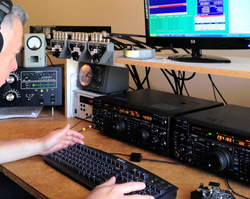 November 14 - 15 -- SARL VHF/UHF Analog Contest (CW, phone)
November 14 - 15 -- SARL VHF/UHF Analog Contest (CW, phone)







